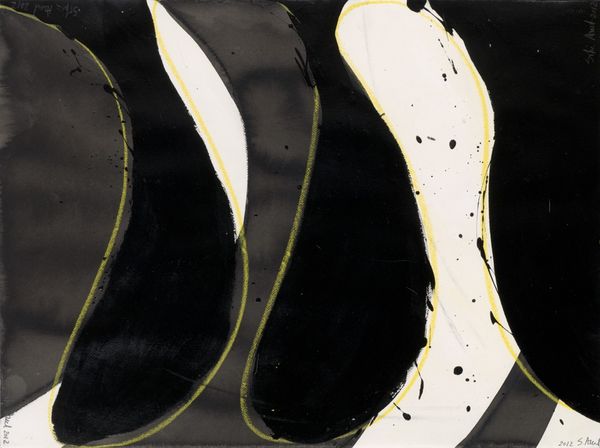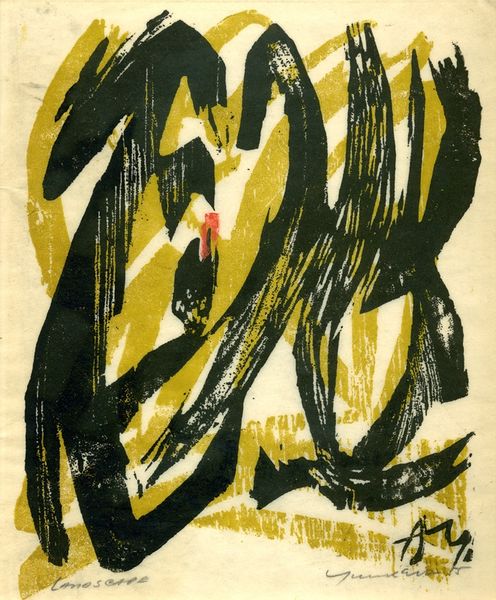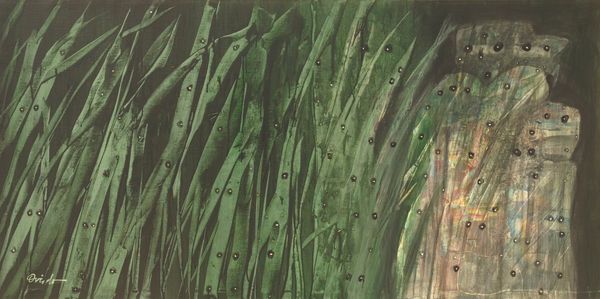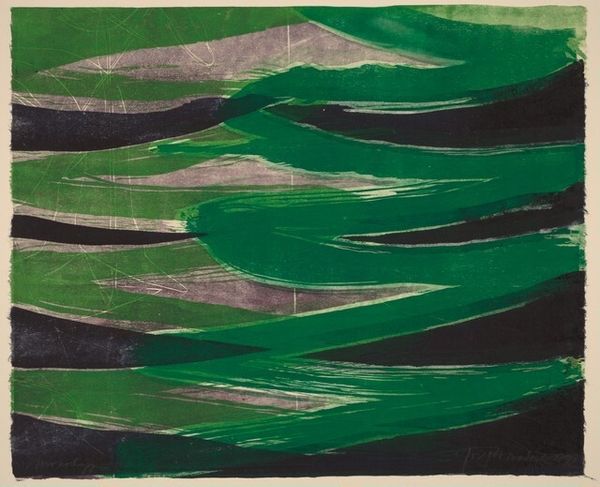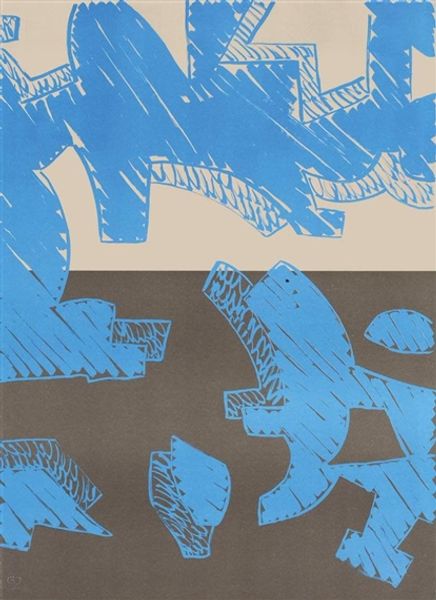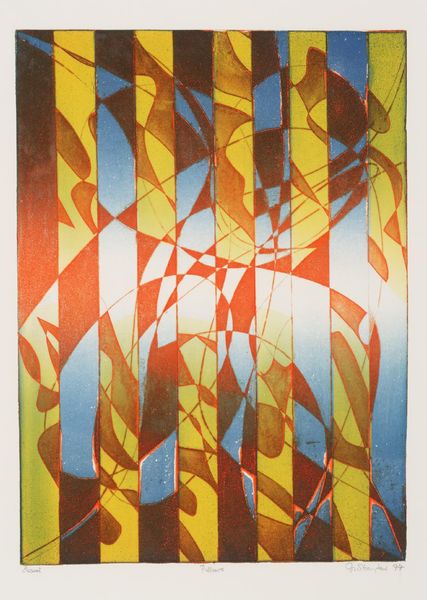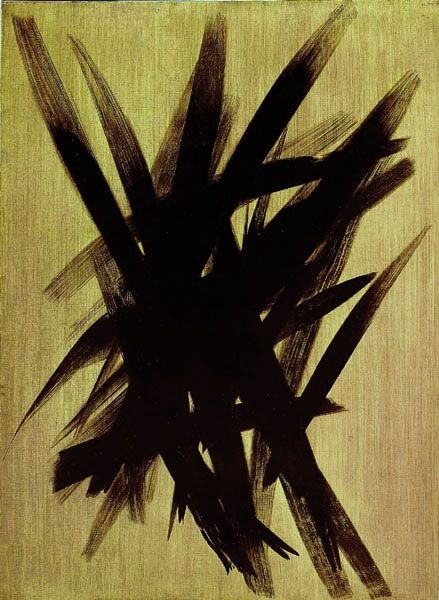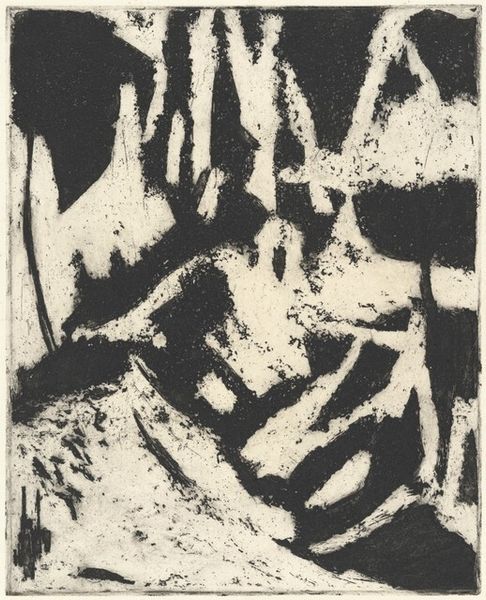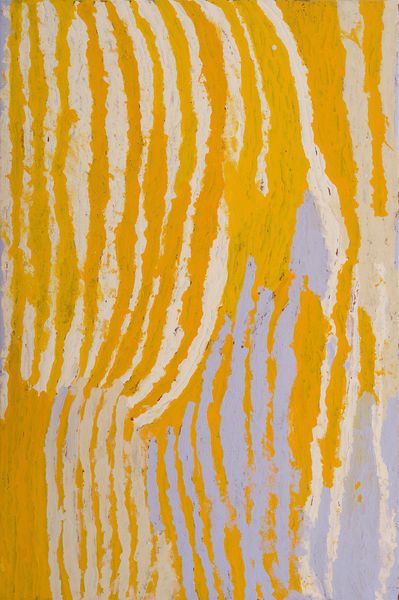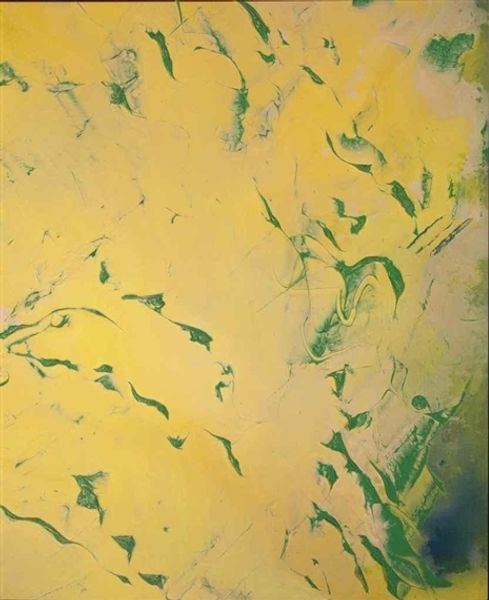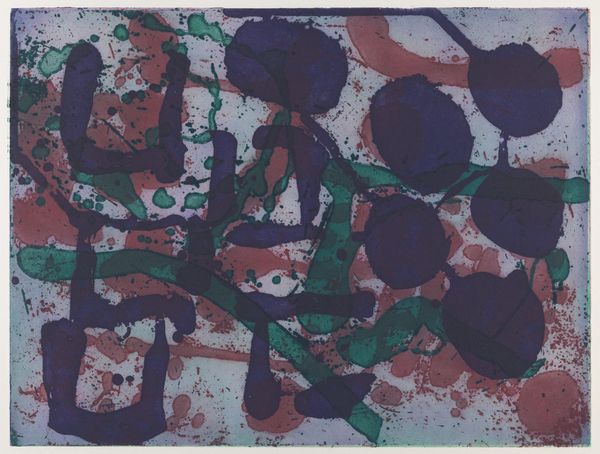
painting, acrylic-paint, impasto
#
abstract painting
#
painting
#
acrylic-paint
#
possibly oil pastel
#
oil painting
#
impasto
#
fluid art
#
acrylic on canvas
#
geometric
#
paint stroke
#
abstraction
#
painting painterly
Copyright: Carla Accardi,Fair Use
Curator: Well, here we are in front of "Giallo," painted in 1969 by Carla Accardi. At first glance, what strikes you about it? Editor: It's surprisingly…calm. Despite the boldness of those yellow strokes, there's a quiet energy. It almost feels like a field of wheat viewed through a heat shimmer. I can almost hear the cicadas buzzing in the heat. Curator: I love that image. For me, the "giallo" – which means yellow in Italian, of course – hints at something deeper. While it literally is just the yellow, this "giallo" period, it’s like Accardi's exploring that raw, almost aggressive, energy hidden within seeming simplicity. Editor: It’s interesting that you call it aggressive, because I am viewing this through the lens of Arte Povera—which challenged traditional art materials and sought to destabilize dominant power structures. Yellow has a really subversive potential. It embodies both visibility and caution; the warm tones, and even evoke the sun's violence in how it contributes to climate change. Curator: See, that is a fascinating reading of the color itself! What I find interesting is how these translucent yellows hover over the ground, almost like light breaking through. It really opens itself to a lot of possible interpretations. Maybe I read aggression in because I know where the artist would go next in her career! Editor: Can we talk about what's underneath? How does that material ground function within the politics you have presented? To me the grain offers this idea of organic decay happening at the ground of the aesthetic reading of the color, adding an eerie juxtaposition to our initial read of the yellow. Curator: Accardi's interesting use of materiality also adds so much here. She has those raw surfaces coming out of the paintings like rebellious eruptions against tradition and formality. It's that very rawness that amplifies the whole, unsettling tension of it all. You know, it makes one think a little deeper. Editor: Exactly. It forces you to engage with not just the image but with its sociopolitical undertones, making art that not only speaks to but also questions the world around us. Thanks for speaking to it. Curator: Absolutely. Thanks for pushing my thinking in this direction too.
Comments
No comments
Be the first to comment and join the conversation on the ultimate creative platform.

